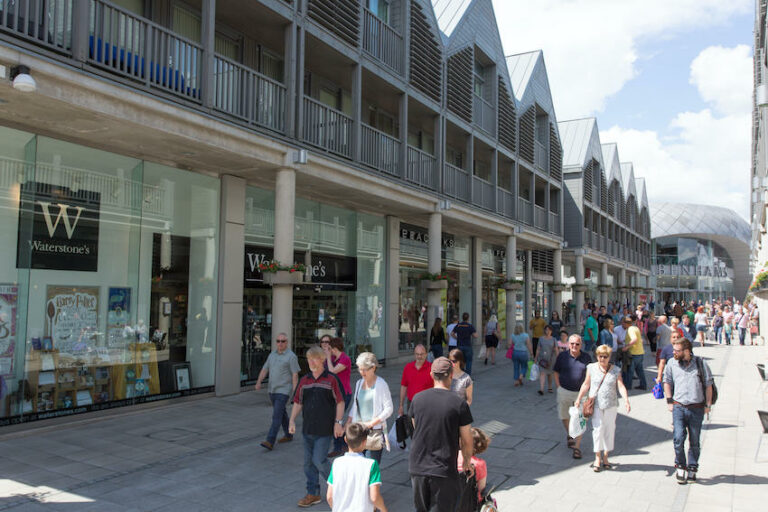July remained steady month-on-month with retail footfall rising by only +0.5% in all UK retail destinations from June. This was mainly led by high street footfall increasing by +1.1% whereas retail parks and shopping centres saw no change.
Jenni Matthews, marketing and insights director, at MRI Software, said: “This may well be attributed to many individuals, couples and families choosing to take vacations much earlier than expected in the month as a result of the poor start to the summer. MRI Software’s recent Consumer Pulse Survey, which was carried out in May, revealed that 46.5% of those surveyed were planning to take a vacation abroad this year with July (+24.2%) and August (+34.1%) being the most popular months for this.”
Matthews said the month started on a weak note with footfall declining in the first week by -3.6% in all UK retail destinations driven mainly by a drop in high street activity resulting from the poor weather experienced that week. However, the remainder of the month experienced steady rises week-on-week driven again by high street footfall and the influence of England’s matches in the final stages of the Euros.
England’s semi-final victory against the Netherlands was a particularly triumphant occasion for high streets during the early evening period (between 17:00-20:00) where activity rose by +5.2% compared with declines in retail parks (-8.6%) and shopping centres (-2.5%) suggesting many had likely headed into towns and cities to bars, pubs or venues showing the game to watch with friends and family. This was also evident with footfall continuing to rise after the game by +2.5% week on week.
With many of England’s final stage matches taking place over the weekend period, Matthews said it was encouraging to see footfall during this period rise marginally by +0.3% year on year providing the leisure and hospitality sector with a boost in evening trade. Weekday activity declined by -1.5% in July from June which is another nod to the vacation trend starting early; a declining trend which has been noticeable for the third consecutive month.
MRI’s data revealed that retail parks and shopping centres remained stagnant month-on-month, with slight fluctuations balancing out overall performance. Shopping centres, however, did witness a boost in footfall of +6.9% in the final week of the month from the week prior, which is likely to be a bounce back from the week before when many retail stores and destinations adjusted opening hours in light of the Euros Men’s final. The momentum continued throughout that week for shopping centres with strong increases recorded in the latter part of the week, averaging +7.5% from Thursday to Saturday. “This could be an indicator of many favouring family friendly destinations at the start of the school summer holidays and was reflected in larger centres (over 500,000sq ft) seeing a +7.3% rise in footfall which is where there usually tends to be a variety of amenities available,” commented Matthews.
Comparing to 2023, retail footfall declined by -0.6%, marking a return to normalcy last seen in 2019. This trend is likely attributed to vacation trends coinciding with the beginning of the school summer holidays and is reflected in GFK’s Consumer Confidence index for the month which highlighted an increase in ‘major purchase’ intentions and overall sentiment around personal finances over the last 12 months. Shopping centres drove much of the year on year decline as footfall fell by -3% however high streets (+0.3%) and retail parks (+0.1%) saw marginal rises year on year.
Slow start in preparations for Golden Quarter
Retailers appear to be slow in preparing for this year’s Golden Quarter – the peak trading period in the lead up to Christmas – with 77% yet to plan, as indicated by MRI Software’s weekly Insights from the Inside poll. This weekly survey of over 700 store managers provides insights from the shop floor around how external factors and consumer behaviour are impacting both footfall and spending. Matthews said: “Failure to plan from a staffing and operational viewpoint may leave retailers on the sidelines during one of the busiest times of the year, therefore understanding footfall trends and the inside workings of the retail store or destination should be front of mind for leaders within the sector.”
She added that, with the Olympics well underway, retail destinations may benefit from an additional boost in footfall this summer especially if investments have been made in activations supporting the event. On the day of the opening ceremony, footfall in Central London was +12% higher week on week which may be an indicator of the start of the school summer holidays and day trips occurring but also coincided with the rail disruption at St Pancras leaving many stranded in London as they failed to get to Paris. August will also see Taylor Swift return to London for the final leg of her European tour and with the economic impact created in June, this is an event which retail, leisure and hospitality destinations should prepare for as ‘Swifties’ descend on the city once again.


